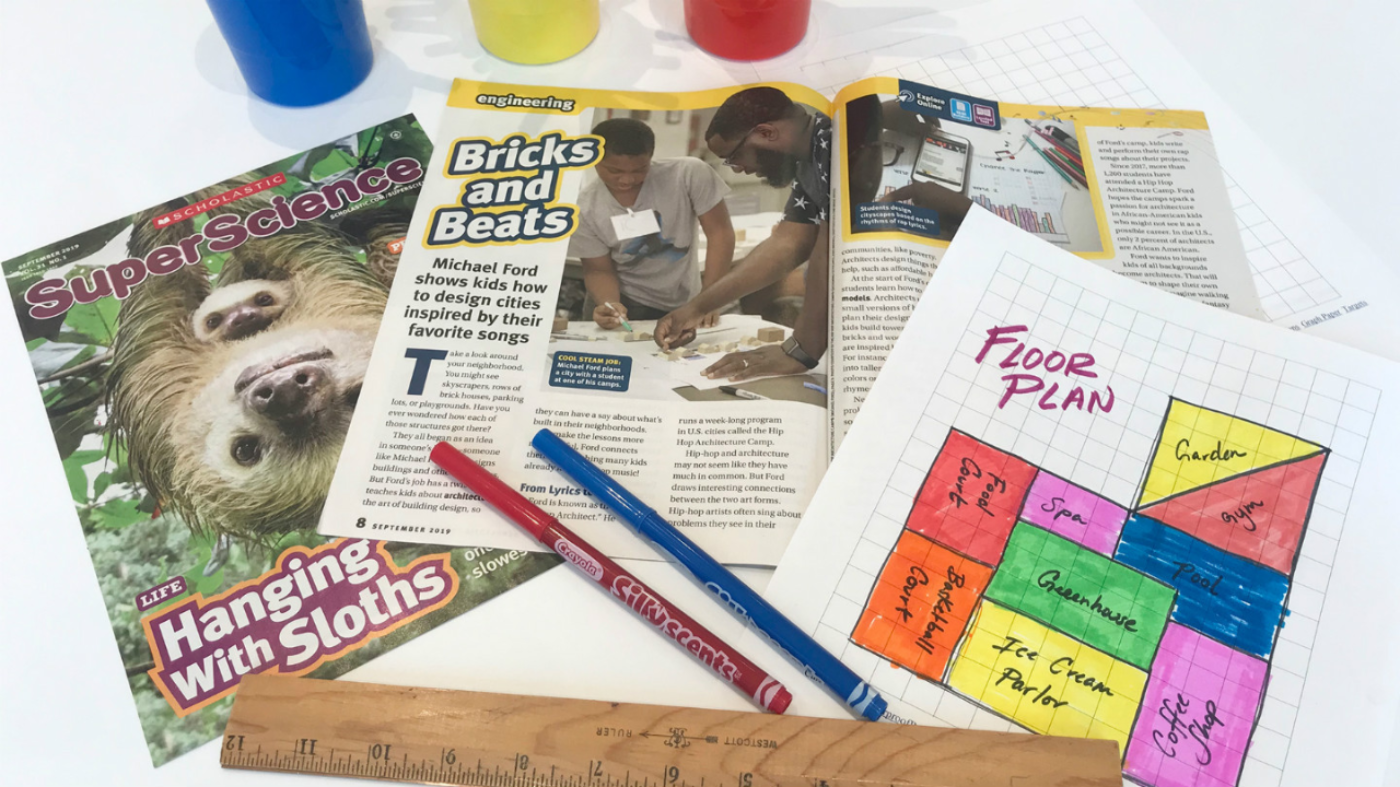Key Takeaways:
- It’s important to promote a growth mindset for student success all year long.
- Exposing students to different STEM careers is a great way for them to build growth mindset.
- Scholastic’s SuperScience magazine features a variety of engaging STEM careers.
The school year is in full swing! With a new year comes new academic goals. But what about social goals? How do we make sure our kids are becoming good learners and citizens? Two words: growth mindset. Growth mindset is the idea that through hard work and determination you can develop new skills and learn new topics, regardless of ability level.
As a sixth-grade math and science teacher, I’m always looking for new ways to promote a growth mindset with my middle school students. One way to do that is to expose students to STEM careers. Seeing these careers allows them to imagine a different future for themselves. That’s where Scholastic’s SuperScience magazine comes in. Each issue features the work of a variety of scientists and engineers—from architects to archaeologists, arachnid experts, and artists.
This year, I used the article “Bricks and Beats” from the September 2019 issue of SuperScience. The article is about a peculiar STEM career: an architect who uses hip-hop to inspire students to design buildings for their community. My students loved that the students in the article were using music to create their buildings.
Using the article as inspiration, I told my students, “The sky’s the limit!” and asked them to write about their dream house. They had some amazing ideas. One student said they would have a coffee shop, fast food restaurant, and ice cream parlor in their house with a slide that connects to school so they wouldn’t have to walk or wait for the bus! Another student created a house with rooms for each of their friends and family members. I even had a student include a room specifically for eating fried chicken!
After reading the article, we looked at some examples of architectural drawings and floor plans. We brainstormed how someone would draw different buildings like an architect. We came up with details that were most important, like doors, floor levels, and specific rooms. Then I asked the students to create an architectural building drawing using graph paper. I had two requirements: The students had to create a building for our town and the building had to have three specific uses that could benefit the town.
As the students worked on their creations they ran into some issues. How to draw like an architect? How to delineate certain parts of their creations? How to communicate the size of their rooms? My answer: Look it up! The students used their Chromebooks to search for the answers to their questions. This is a chance for the students to use a growth mindset and figure things out on their own (with guidance from their teacher of course). The students had to take it upon themselves to learn about the basics of architecture. Through their hard work and determination, they were able to understand what is involved with planning and building a house.
This worked great! The students created a rough draft of their building design on graph paper or drawing paper. Some students drew floor plans. Others drew 2-D or 3-D models. Then they used Google Drawings to make digital models of their buildings, making sure to label and explain all appropriate parts. Finally, with the help of our school’s Technology Specialist, we overlaid the students’ designs on our school’s greenscreen, with the students in the foreground. This gave the students a sense that their building designs were coming to life. It was awesome! At the end of our lesson every student wanted to design buildings for a living!
Before reading “Bricks and Beats” in SuperScience, my students didn’t even know what an architect is! Now they’ve learned about architectural design and the hard work it takes to plan something on the scale of a building. The article gave me a chance to expose students to potential career choices, as well as 21st century workplace skills like perseverance and research. My students and I can’t wait to see what other cool STEM jobs SuperScience features next!
Try SuperScience Free in Your Classroom
See for yourself how SuperScience empowers elementary school to students develop a growth mindset. Start a 30-day free trial in your classroom! You’ll receive complete print and digital access to SuperScience, the real-world science resource featuring captivating stories and hands-on investigations that make science relevant to students’ lives. Try it now and get magazines for every student, plus activities, videos, games, multiple reading levels and much more!

